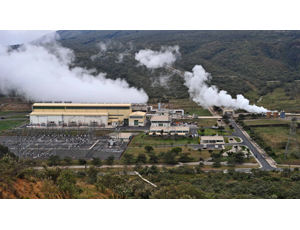

Despite the challenges of inadequate policy, problems of pricing and lack of infrastructure, analysts say countries in sub Saharan Africa hope to increase power generation in 2015. The region is launching initiatives designed to meet the demands of projected GDP growth of more than 5% and also provide power to many of the 620 million people who currently live without access to electricity.
Despite existing constraints, plans call for increased production of liquefied natural gas, oil and deployment of renewable energy technologies of hydropower, solar, wind and biomas to boost the region's energy sector in 2015.
Sub-Saharan Africa faces the challeneges of securing a power supply that has a low carbon footprint and is affordable, says Klaus Findt, Partner and African Market Leader of Infrastructure and Major Projects at KPMG
In a joint statement in KPMG’s latest Africa Energy Outlook and beyond, Findt, together with De Buys Scott, the analyst's Partner and Head of Infrastructure Power and Utilities Advisory in South Africa, says the trilemma is “both a challenge and an opportunity." The challenge, he says, comes "from an old, unreliable and inefficiently maintained infrastructure with assets from the nineties and politically-driven regulations and tariffs.”
However, Findt and Scott say in coming months the energy sector in sub-Saharan Africa will be shaped by “the high demand of new assets and infrastructure and subsequent necessity to develop directly with regards to the compatibility of all three goals set in the trilemma.”
Nigeria, African largest natural gas producer and consumer, expects to reach a final investment decision for its LNG projects of Olokola Liquefied Natural Gas, Brass LNG and Train 7 projects with analysts saying completing the undertaking would enable the West Africa nation to get a share of the high-demand Asian LNG markets. Italy's Eni and France's Total are involved in the Brass project.
Foreign firms, led by the US’s Anadarko and Eni are also developing the $30-billion Mozambique LNG project with an estimated capacity of 20 million tonnes per year to be ready by 2018.
"The LNG cost base and pricing from our Mozambique project is competitive in today's LNG market, which is supported by the willingness of our partners to invest more than $3 billion to date in this world-class development," Steve Hoyle, Anadarko's vice-president for LNG, who is leading the project, told Reuters in October.
Tanzania, with an estimated 53.2 trillion cubic feet (tcf) of gas is expected to make progress in 2015 on the planned two-train LNG plant by the UK’s BG Group and its partners, Ophir Energy, Exxon Mobil and Statoil.
Additional LNG capacity is expected from Angola, Cameroon, Congo, Cote dÍvoire and South Africa. Sub-Saharan Africa’s gas production rose from 7 billion cu m (bcm) in 1990 to 58 bcm in 2012. Although natural gas accounts for 4% of the region’s total energy mix, demand has grown to 27 bcm with Nigeria expected to meet 60% of the demand.

Post a comment to this article
Report Abusive Comment